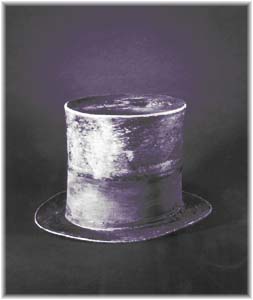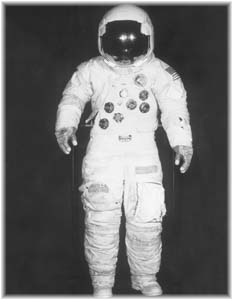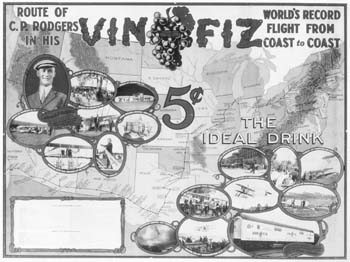![[Metroactive Arts]](/arts/gifs/art468.gif)
![[Metroactive Arts]](/arts/gifs/art468.gif)
[ Arts Index | Metro | Metroactive Central | Archives ]
Relics 'n' Stuff
Photo by Smithsonian Institution
The Smithsonian's grab bag of national treasures and pop-culture trivia demonstrates the leveling genius of democracy
EVER BEEN to Graceland? It's so small. Probably a third of the houses in the Santa Clara Valley have more floor space than the one Elvis Presley lived in. Keeping Elvis' memory verdant means preserving a lot of furnishing mistakes of the early '70s: shag carpet (all the better to shag on, I guess); smoked glasstopped coffee tables; three recessed televisions--one for each network; and as the centerpiece: a white ceramic chimp the size of a small beach ball. (After the guide explained the meaning of the (infinity) symbol and "TCB" logo that appear throughout Graceland, I had to be a joker and ask whether the ceramic ape possessed any symbolic value. "No," the guide replied. "Elvis just liked animals.")
That pottery chimp, the interior-decoration equivalent of the famous bacon, peanut-butter and mashed-banana sandwiches Elvis liked, communicates so much about the daily life of Elvis. The people responsible for leaving it there have helped keep the image of Elvis human-sized amid the more regal excesses like the Lisa Marie, the Convair 880 jet parked in the strip mall across the street from the King's famous pad.
At the traveling show America's Smithsonian at the San Jose Convention Center, the same contrast between the larger than life and the smaller than life is at work. The top hat of Abraham Lincoln, one of the most boasted-over relics on display, is proof that the monument was once a man; but the hat of Indiana Jones, a few yards away, makes it hard to think of Lincoln as anything but another mythological figure, someone seen looming on the movie screen of the mind.
The exhibit is an unmixed pleasure to attend. The price is right (it's free--the organizers haven't stressed this happy fact enough). It was easy to get at--as long as you went midweek and midday, that is. The senior citizens who direct traffic through the halls are all so nice that it's practically poignant. I'm not convinced that the past was really a place where they had better manners, but these elderly docents try to make you believe this was the case.
The whole show was a deliberate hodgepodge. Except for the dim lighting (to spare the more fragile stuff from fading) and the music (Ray Charles beating up "America the Beautiful" at the entrance), it lacks a mood or a theme. This part is history, that part is art and this part over here is technology--and then, over here, is the merry-go-round and the gift shop. Even the most astounding things tend to look fairly anticlimactic in the airport hangarsized convention center.
The show isn't more than a sum of its parts, but that's its appeal. Punching up the items would ruin the effect. Incidentally, the local TV cameras have focused so much on Dorothy's Red Shoes that they haven't stressed that this show also features a handful of fine paintings, including John Singer Sargent's 1884 portrait of the creamy-skinned, iron-willed Mrs. Kent Moore--another cool painting by this great limner of neurotic-looking industrial barons and their baronesses.
San Jose is also temporarily sheltering Edward Hopper's 1926 11 A.M., a portrait of a nude woman who is perhaps considering throwing herself out of the window of one of Hopper's trademark alienating skyscrapers. For fans of geographical exotica, there is Frederick Church's glowing Arctic landscape of 1865, Aurora Borealis.
Photo by Smithsonian Institution
IN ONE GLASS CASE are two large but unmatched chairs and a small, round hardwood table. A good-sized potted plant would cover this table, upon which Confederate Gen. Robert E. Lee signed the surrender at Appomattox. That day, Lee was in full uniform with gloves, carrying the jeweled sword some British society women had given to him.
Union Gen. Ulysses S. Grant arrived without having had time to prepare; he is supposed to have had a migraine that morning. Grant was dressed, writes Edmund Wilson in his literary history Patriotic Gore, "in an unbuttoned blue flannel blouse, swordless and spattered with mud and with nothing but his lieutenant-general's shoulder straps to show he was not a private."
I was transported with awe at the two chairs until the man next to me delivered the perfect comment: "You'd think they'd have used something bigger and more imposing." A second man, looking at the chair Lee had taken, observed its cane bottom, which is still shapeless and indented, as if from the fundament of Robert E. Lee himself. "A big job of caning," he decided.
A guard keeps watch on another holy item in a glass case--Lincoln's top hat--lest some latter-day Booth decides to take aim ("Thus always, to the hats of tyrants! Virginia is avenged, again!"). After the first swell of reverence, I recalled the less-famous part of Friedrich von Schiller's William Tell. The Austrian tyrant Gessler had placed his hat atop a flagpole in the town square for the villagers to salute. Tell, the great Swiss archer, arrowed the hat off the pole, and as punishment, Gessler forced Tell to shoot the apple off his son's head.
Lincoln was no Gessler, obviously, though he has been compared (by the eminent historian Richard Hofstader) to Otto von Bismarck. Still, once the image of a sacred political hat was there in the mind, it wouldn't be dislodged. At that point, three passersby sighted the Hat:
Lincoln's hat shares the room with Minnie Pearl's plastic fruitencrusted straw boater and Indiana Jones' battered fedora. The leveling quality of the juxtapositions is too obvious too miss. In the same spirit, Amelia Earhart's flight suit is paired with the terry-cloth body of the original Kermit the Frog. The compass that guided William Clark and Meriwether Lewis across America is less popular than Dorothy's red shoes from The Wizard of Oz--even though these shoes would seem to be in more places at once than any relic since the True Cross.
The jumble of America's Smithsonian includes both a Picasso and the jaws of Carcharodon megalodon, an immense fossil shark whose maw you could bobsled through without getting scratched. The Appomattox table is three cases down from a gown worn by the one and only Pat Nixon, which is placed higher off the ground than Lincoln's hat.
The comforting contrast of kitsch relics with national treasures can have a transforming effect. Only the Tucker automobile--a blindingly silver bulgemobile larger than most people's apartments--seems out of human scale, and visitors respond with similar humanity. Seeing that Washington's sword is not too big for an ordinary man or woman to wield is impressive. For a little while the day I attended, I didn't think democracy was dead.
Flight Path: A commemorative ad celebrates the 1911 cross-country flight of C.P. Rodgers in the Wright Brothers' 'Vin Fiz' plane.
THIS TRAVELING EXHIBIT, one stop on a 12-city tour, contains only a minute fraction of the stuff that fills the 150-year-old Smithsonian, a refuge for everything from live lemurs to the Folkways record catalogue to the Hope diamond--and lots of spacecraft. The Wright Brothers' Vin Fiz, the first plane to make a transcontinental flight, is here for a few weeks, as well as the Apollo 14 space capsule. The latter is smaller than a Volkswagen Beetle and is the color of dried blood from the heat of reentry and the corrosion of sea water.
The Smithsonian's enormous collection of everything marks it as the greatest descendent of the Wunderkammern of the 1600s. The first museums were cabinets of curiosities unarranged by anything but their rarity. Lawrence Weschler's Mr. Wilson's Cabinet of Wonder (Vintage Books) profiles performance artist/prankster David Wilson, the owner and curator of a dime museum full of fake oddities known as the Museum of Jurassic Technology in Culver City.
To understand Wilson's elaborate parody of collecting, Weschler researched the history of museums, which were, in the beginning, just like America's Smithsonian: aggregations of paintings, relics, fossils and artifacts all knocking together. Just as cathedrals once drew the devout to see the shinbones and fingers of the saints, the museums became the new temples of the cities, places to visit, marvel over and worship in.
What seems particularly unusual about America's Smithsonian is the rightness of the way the sword of George Washington goes together in the same room with a Star Trek phaser (even if it's probably not really Kirk's phaser). It's a strange contradiction that to most Americans history is still, as it was to Henry Ford, bunk. And yet Americans look with such ardor toward the past.
Consider the nostalgia industry, the booming numbers of collectible shops, antique stores and flea markets. Look at how full the average shopping mall is of replica '50s diners and images of Marilyn Monroe, James Dean and Humphrey Bogart. It doesn't take a museum exhibit to prove that the ordinary objects of the past have their own stories.
I suppose the challenge is to find this mystical quality dwelling in the stuff of today--as Vladimir Nabokov wrote in the short story A Guide to Berlin, "to find in the objects around us the fragrant tenderness that only posterity will discern and appreciate in the far off times when every trifle of our plain everyday life will become exquisite and festive in its own right."
[ Metro | Metroactive Central | Archives ]
Copyright © Metro Publishing Inc. Maintained by Boulevards New Media.

Hat's Entertainment: Abe Lincoln's battered chapeau reminds visitors that uneasy lies the head that wears the top hat.
Take Me to Your Tailor: The baggy look in men's fashion might have taken its cue from James Irwin's Apollo 15 space garb.
(Reverently) "Oh, for crying out loud!"
"I guess that's silk."
"It's worse for wear, isn't it?"
Yes, this needed to be said. The hat is very much the worse for wear. The silk (if that's what it was) is disintegrating and discolored--the Salvation Army would turn it down if the government wanted to cut costs and make a donation.

Smithsonian Institution
America's Smithsonian runs 9am6:30pm through Aug. 31 at the San Jose Convention Center. Admission is free. Reserved tickets are available five days in advance; call 800/913-TOUR (there is a $3.50 service charge for advance tickets). Daily tickets are available at the San Jose Center for the Performing Arts, starting at 9am.
From the August 21-27, 1997 issue of Metro.